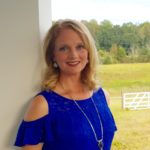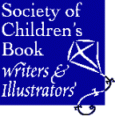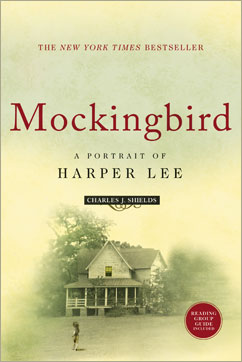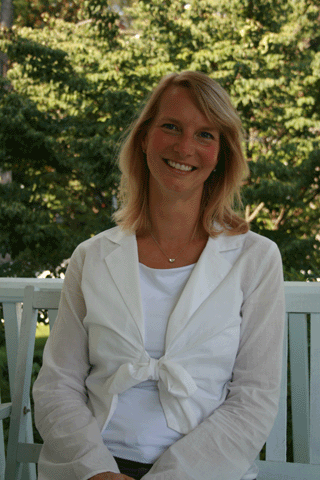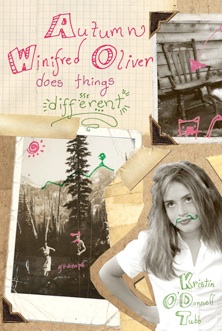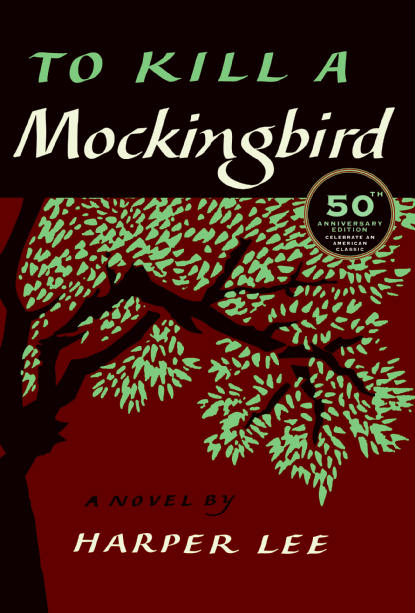
Those of you who’ve been around me in real life know I’ve been on a Harper Lee kick lately. For a while, I managed to bring her name into just about every conversation.
It looks like rain today. Hey, that reminds me of the weather in Monroeville where Harper Lee lives.
Are you going on the field trip next week? Hey, did you know Harper Lee was from Alabama and moved to New York in her 20s?
Have you read any good books lately? I’m reading To Kill a Mockingbird again. Have you ever read it?
I can blame it on my local public library. Back in March, they hosted the first annual BIG READ event, inviting the whole town to read To Kill a Mockingbird together.
I couldn’t believe it. People of all ages reading the same book together! (Can you hear the harp music now?) Our library used some grant money to buy dozens of copies of the book, as well as DVDs of the movie, and recent biographies of Harper Lee by author Charles Shields.
If that weren’t enough, there were special speakers and events every week. I almost made it to everything. It was heavenly for me, since everything was local and FREE.
The first major event was a public showing of the movie, “To Kill a Mockingbird,” starring Gregory Peck. I gathered a group of friends and their kids, and we all went together. It was my third time seeing the movie that month, since I’d watched the DVD twice already, with and without the director commentary. So you see, I was a little obsessed.
At the movie night, we listened to guest speaker, Mary Badham, the actress who played Scout in the movie. Oh, she was wonderful. She told us funny stories about how she got chosen to play Scout and how she and Philip Alford, the boy who played Gem, used to fight and tease each other with squirt guns.
Before the movie started, she signed a copy of the photograph below for us, which I’ll always treasure:

Mary Badham was so gracious. I know she has been answering the same questions over and over for decades, but she made it so fresh and new for all of us. She did tell us that she can’t watch the movie anymore “because everybody in it is gone now. It’s just me and Philip (Gem) who are left.” Gregory Peck passed away in 2003.
A couple of weeks later, we were visited by Charles Shields, the author of the best biography you can find on Harper Lee. She really is a mysterious writer, refusing to do any interviews since the ’60s. Shields took four years writing his book about Harper Lee, completely without any cooperation from her. He conducted over 600 interviews, which make this a thoroughly fascinating read.
She only wrote ONE BOOK, by golly. It took her ten and a half years to finish it. She moved from Alabama to New York to be near her friend, Truman Capote (who is the character Dill in the novel), and to start a writing career. She lived in a tiny apartment with no hot water and wrote on a homemade desk made from a closet door.
Shields told us, at one point, Lee became so frustrated, that in the summer of 1957, she threw her manuscript out the window! She called her editor and said, “I give up.” Her editor told her to get out there and collect the pages of her manuscript or she’d have to pay back her advance. Lee couldn’t afford to do this, so she finally turned it in.
To Kill a Mockingbird was published in 1960, and it became an instant success, earning her the Pulitzer Prize. The movie version, with a screenplay by Horton Foote, won four academy awards in 1962. It has never gone out of print, has sold 30 million copies, and still sells a million copies yearly. The book is required reading by nearly every public high school in America.
Yet she never wrote another book. She’s in her 80s now and still lives a quiet life in Monroeville, which is now known as “the literary capital of Alabama.”
Since 2010 marks 50 years since the publication of Lee’s world-famous novel, Monroeville is hosting a 50th anniversary celebration in July. There will be all kinds of literary tours and events, and even a giant birthday party for the book. You can read all about it here.
Harper Lee did publish a few essays in magazines in the 1960s. If you’re curious, here are a couple of links:
Love–In Other Words, published in Vogue Magazine in 1961
Christmas To Me, published in McCall’s magazine, December 1961
I recently found out our BIG READ book for next year will be The Great Gatsby. Good thing, because I’ve also been on a Zelda Fitzgerald kick lately. But that’s a whole ‘nother story.

